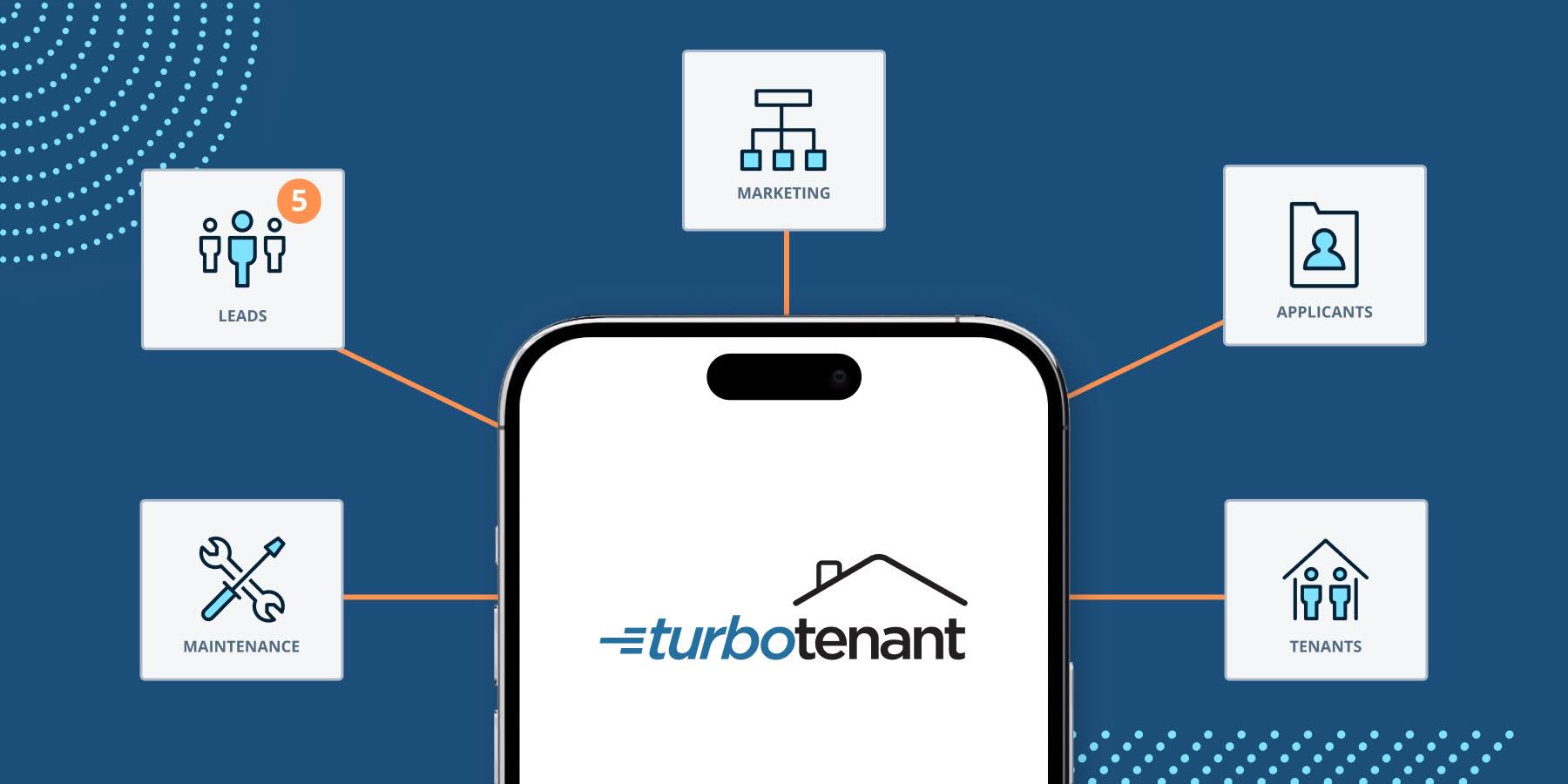If you want to earn rental income in Maryland, you have several options. You can lease a spare room in your home, buy an investment property in another area, or rent out your place while you travel. But no matter which path you choose, you’ll need to learn how to be a landlord in Maryland first.
TurboTenant can help. We offer the tools and information you need to become a landlord in the Old Line State, including state-specific lease agreements, estimated rent calculators, and more. Our free software simplifies the process so you can keep your rental income instead of spending it on an old-fashioned property manager.
Keep reading to learn what you need to know about being a landlord in Maryland.
Research the Market
You’ll first need a rental property or unit to start as a landlord. And while it might go without saying, you’ll need to pay close attention to location. Even if you think you know everything about a particular rental market, whether local or remote, always conduct thorough research to learn more.
No matter where you want to be a landlord, keep a few key factors in mind as you decide. Look into neighborhood safety and how close each area is to amenities like parks and grocery stores.
The local economy also plays a significant role in the success of your rental property. Look for a location with strong job opportunities and economic stability to help ensure your tenants can afford the rent. Our rent estimate calculator can help you answer some of these questions.
When it comes to the property itself, thoroughly research local real estate market trends and inventory levels. You’ll also need to consider affordability since you have to cover the cost of the property from the start.
Finally, check whether your desired locale requires landlords to obtain rental licenses. While Maryland has no statewide requirement, certain cities and counties require these certifications.
Do Some Math
As you determine where and how to be a landlord in Maryland, you’ll need to run some calculations on the property (or properties) that interest you. This step will help you decide whether renting out the property in question makes financial sense.
To start, determine whether the property needs major renovations since those could significantly increase the cost of owning and operating your rental. Beyond that, keep several other factors in mind. You can check local rent-to-income ratios, rental property ROI, and potential cash flow, to name just a few.
You have plenty of calculations to make before purchasing a rental property or renting out a room. Check out TurboTenant’s landlord toolbox for calculators that can help you make the right decision.
Read Up On Local Landlord-Tenant Law
Anyone who wants to learn how to be a landlord in Maryland must first understand how to comply with all Maryland landlord-tenant laws. These statewide regulations apply alongside federal laws like the Fair Credit Reporting Act, the Servicemembers Civil Relief Act, and the Fair Housing Act, which apply across the U.S.
Security deposit rules: As of 2024, Maryland landlords can charge up to one month of rent as a security deposit in most cases. However, they may charge up to two months of rent if all three of the following conditions are met:
- The tenant qualifies for utility assistance from the Department of Human Services
- The tenant pays the landlord for utilities
- The tenant and landlord agree in writing on the amount of the security deposit
Regardless of the amount charged, the landlord must deposit the funds in an interest-bearing account at a federally insured institution. They must also give the tenant a written receipt for the deposit.
Entry requirements: Prince George’s County requires landlords to provide 24 hours of notice before entering the dwelling unit. Maryland law does not set a specific notice period in other areas of the state. However, landlords should still try to give 24 to 48 hours of notice to respect the tenant’s right to privacy. In an emergency, the landlord can enter immediately without notice.
Eviction laws: Landlords in Maryland can evict tenants for valid reasons, such as nonpayment of rent, violation of lease terms, or abandonment of the property. To begin the eviction process, landlords must issue a 10-day Notice to Pay or Quit (Md. Code Real Prop. § 8-401), a 14-day Unconditional Notice to Quit, or a 30-day Notice to Quit (Md. Code Real Prop. § 8-402.1).
Rent control: Although Maryland has no statewide rent control laws, Montgomery County and the city of Takoma Park enforce rent stabilization policies. These regulations limit rent increases to keep them in line with inflation.
Lease breaking: Most of the time, if a tenant ends a lease early—also known as breaking the lease—they must keep paying rent for the rest of the lease term or until the landlord finds a new tenant. However, tenants may break a lease without penalty in these situations:
- To begin active-duty military service
- If the tenant is a victim of domestic violence or sexual assault
- If the rental unit fails to meet safety or habitability standards
- If the landlord harasses the tenant
Use Property Management Software
Now that you have a better idea of how to be a landlord in Maryland, it’s time to get into the nuts and bolts of the process. And trust us, there are plenty of those to deal with.
If you’re feeling daunted by the next steps of becoming a landlord, here’s some good news: you don’t have to do everything alone. Property management software can save you time and money by handling complex tasks you’d otherwise manage manually.
TurboTenant centralizes all your landlord duties in one easily accessible location. Our platform offers secure document storage and streamlined financial management, helping you manage the business side of being a landlord.
When you use TurboTenant, your tenants also benefit. Our communication features strengthen landlord-tenant relationships, which can lead to higher occupancy rates in your rental portfolio.
Use a Legally Compliant Lease
Before you get too excited about renting your property, ensure you have all your ducks in a row. More specifically, you should use a legally binding lease tailored to Maryland.
Leases are written contracts that outline the rights and responsibilities of tenants and landlords. While some landlords rely on oral leases, those can be difficult to enforce and may lead to conflicts.
With that said, don’t rely on a generic online lease agreement. TurboTenant’s lease templates help you quickly and easily create a rental contract that follows all Maryland regulations. If you upgrade to a Pro or Premium membership, you’ll get access to unlimited lease agreements. Premium also includes e-sign options that save you even more time.
Market Your Property
Now, it’s time to market your property and find tenants. Start by creating a high-quality listing that grabs the attention of renters in your target market.
Several factors go into crafting the perfect rental listing. First and foremost, price your rental competitively—don’t list it thousands of dollars above similar properties. Also, avoid any discriminatory language. Never include wording discouraging renters from specific backgrounds or tenants with disabilities from applying.
To advertise your rental property across dozens of websites, use TurboTenant’s free rental advertising feature. It lets landlords build listings with AI and manage potential leads with ease.
Collect Rental Applications Digitally
Once you’ve got some eyeballs on your rental listing, it’s time to turn that interest into applications. Rental applications collect critical information about prospective tenants, including income history, credit score, and eviction records.
Naturally, rental applications play a crucial role in securing high-quality tenants. But don’t waste time or money printing physical copies. Instead, text or email an online application to a potential renter.
Digital applications let landlords compare all applicants in one central location. You won’t have to deal with the hassle of printed applications, which are easy to misplace or damage during the process.
Screen Tenants Thoroughly
As crucial as applications are, you shouldn’t take the reported information at face value. Always conduct thorough tenant screenings to learn more about prospective renters. And under the federal Fair Housing Act, you must screen all tenants in the exact same fashion.
With this in mind, use industry-standard screening tools to gather crucial information about a potential tenant. TurboTenant’s tenant screenings, paid for by the applicant, check financial details like credit scores, lines of credit, and debt in collections.
You can also review a tenant’s eviction history against more than 27 million records and examine their criminal history. Remember that Maryland law prohibits landlords from considering convictions over 3 years old. If you upgrade to a Premium account, you can verify the tenant’s income against what they reported on the application.
Lock Down Maintenance Requests
Federal and state laws require landlords to keep rental properties safe and habitable. Beyond meeting a legal requirement, maintaining a rental in good shape also improves tenant satisfaction, which can lead to longer-term renters and more rental income.
TurboTenant makes it easy for tenants to submit maintenance requests online and for landlords to respond quickly. You won’t have to dig through old texts or emails to track each request—instead, you can manage every work order in one place. TurboTenant also saves maintenance history, so you’ll always know when you last replaced the smoke detector batteries.
If you want to avoid handling maintenance issues yourself, upgrade to Maintenance Plus. With it, our thoroughly vetted team receives, responds to, and resolves maintenance requests, contacting you only if they need extra approval.
Collect Rent Online
Watching a rental investment pay off might be one of the most rewarding parts of being a landlord. However, collecting rent by check or in person can bring its own stresses, like making time for a bank trip or confronting a tenant about late payments.
Fortunately, you can collect rent online with TurboTenant. Both landlords and tenants benefit from our secure, fast payment portal, which includes features like autopay, automatic payment reminders, and automatic late fees if rent is overdue.
Unlike slower check payments, online rent payments automatically appear in the landlord’s TurboTenant account, allowing you to easily track who has already paid and who still owes rent.
Streamline Rental Property Accounting
Now that your rental property is up and running, it’s time to crunch some numbers (yes, again). You’ll need to track income and expenses, but don’t rely on QuickBooks or messy spreadsheets to get the job done.
We get it—accounting isn’t fun. But TurboTenant simplifies this part of the landlord process, too. Built specifically for rental property owners, TurboTenant’s rental accounting feature keeps organized records of cash flow, expenses, balance sheets, and revenue. You can also track profit and loss, monitor leases, and generate statements of cash flows.
While all these considerations might sound overwhelming, TurboTenant makes rental property accounting easy. And trust us, you’ll be glad to have all those important financial records neatly organized when tax season rolls around.
TurboTenant Makes DIY Landlording Easy
No matter how you plan to be a landlord in Maryland, TurboTenant can help. With features like lease agreement templates, automated rent collection, and more, managing every part of your rental property on your own has never been easier.
Sign up for a free TurboTenant account to take full advantage of our features and simplify becoming a landlord today. Your Maryland rental property opportunities await.





